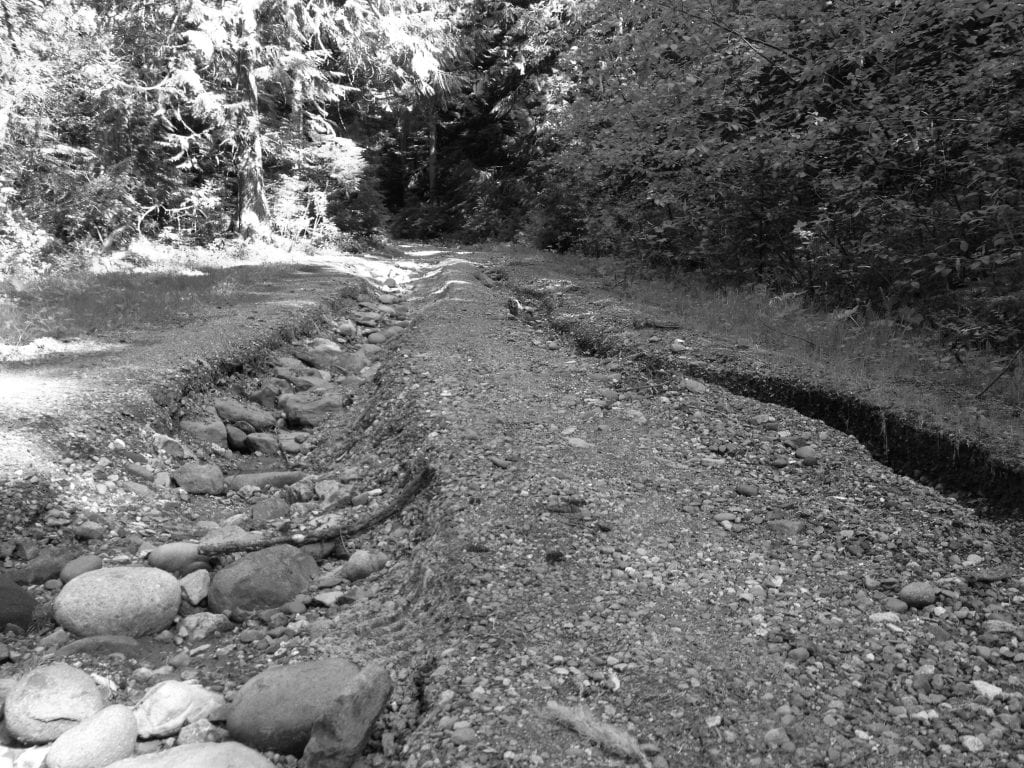Ghost Roads. This term conjures images of a terrified Ichabod Crane slowly moving down a dark, frightening forest road on a trembling horse, waiting for the headless horseman to jump out of the shadows and lop off his head. After working this past spring semester as an intern for WildEarth Guardians I learned a lot about ghost roads, and other types of roads, that weave and wind through national forests. Even though these roads are not haunted by ghouls and goblins, a road that is abandoned, partially treated, or not maintained is very scary.
Ghost roads originate from old logging and mining roads, temporary roads constructed during U.S. Forest Service projects that were not removed after completion, or were illegally created through repeated use. They are not recognized or recorded in Forest Service databases, yet these apparitions still haunt the landscape. Ghost roads retain the potential for severe ecological impacts, particularly in post-wildfire settings. Leaving them on the landscape increases the likelihood of continued environmental impairment, negatively impacting water quality and wildlife habitats. Roads can also exacerbate the effects from wildfires and can make post-wildfire consequences worse, cause wildfires to occur more often, and amplify the magnitude of fire events.
Per the U.S. Forest Service manual, unneeded roads should be decommissioned to a more natural state to protect and enhance National Forest System lands. However, rarely will the agency fully remove the entire road length by recontouring it back to the original slope, leaving these roads on site in varying unnatural conditions.
During my internship I discovered humans have used and abused the forests leaving behind a mosaic of roads zig zagging and scarring mountainsides. Even though the Forest Service faces funding and staffing challenges, they should be identifying these roads and, if appropriate, recontouring them back to a more natural condition. The agency may suggest this occurs in other processes, such as during Burned Area Emergency Response (BAER) activities; however, my research with Guardians proved this to be false. The BAER team admirably performs their post-fire emergency mitigation duties, but they are not actually remediating ghost roads.
My dad worked in the wood products industry most of his life. As a young man he hauled logs for a living and later wood chips from mills in western Montana to particleboard processing centers in Missoula. Even though he relied on the forest to support his family, he also believed in forest conservation and sustainability, although he never used those two words. He supported forest preservation for jobs and recreation. Growing up I spent many summers on Noxon Reservoir were my dad taught me to appreciate the land and treat it with respect so generations after can treasure and learn to love the forest like we did.
Dad passed away in 2017 but if he were here today and I could recite the ghostlore of these roads, he would agree 100 percent they need to be removed. Working with WildEarth Guardians resonated with me because it is what my dad instilled in all his daughters. My favorite place to be is in the deep green shadows of ponderosa pines and Douglas fir and to get there I need a road. But unused roads need to be recontoured to prevent the damage they cause after wildfires, prevent future wildfires, and help restore the watershed. We need to respect the forest and heal the past wounds from resource extraction and human made infrastructure by exorcising ghost roads from the landscape, preserving the forest for wildlife, fish, and future generations.
Like what you just read? Sign up for our E-news. Want to do more? Visit our Action Center.
